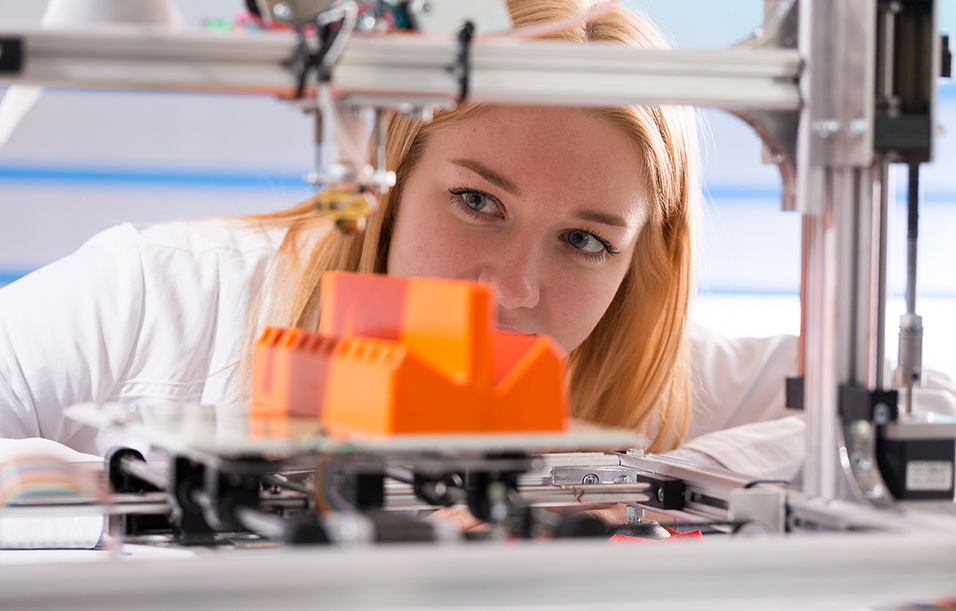The COVID-19 pandemic drastically impacted all aspects of life, and the construction industry is no exception. The prolonged health crisis created an urgency to implement technologies throughout business operations to remain agile and efficient. Some of these technologies include building information modeling (BIM), 3D printing, and drones. And, of course, prefabrication or off-site manufacturing to minimize the number of people on the job site. Let’s explore some of these technologies and how the precast industry is adapting, innovating, and thriving despite challenges uncovered in the pandemic.
BIM & Architectural Certification Program Updates
In a recent article from Construction Business Owner, BIM has become the most commonly used technology in the construction industry. 73% of U.S. contractors surveyed by Dodge Data & Analytics report utilizing BIM, with 79% of those using it on more than 30% of their projects. PCI’s Architectural Certification Program is aligned with the growing use and expectation for BIM on projects. The ability for precast manufacturers to use BIM during production and coordination solves many issues. Precast concrete producers certified in Categories AA and AB must provide 3D/BIM precast concrete submittal drawings when required by specifications. Learn more about PCI Architectural Certification Program updates.
3D Printing & the Master Mold Concept
In residential construction, there are examples of 3D printing applications in which entire homes or layers of materials for on-site assembly are being utilized. For precast concrete used in commercial applications, which is already an off-site or modular construction practice, one of the economies of design is leveraging the master mold concept. Efficiency and economy are achieved by making it possible for similar, if not identical, shapes to be produced from the same master mold, minimizing the time required to disassemble a mold and reassemble it to manufacture the next piece.
An excellent example of 3D printing technology is the 2021 PCI Design Award Winner One South First Project in Brooklyn, NY. To create the façade, the precast concrete producer used 3D-printed molds in a process known as additive manufacturing. The 3D printed forms made it possible to produce a large number of panels with window openings rapidly. Whereas traditionally, a mold for this type of project requires 40-60 manhours, automated 3D printing only needed 14 hours, notes Steve Schweitzer, Vice President of Operations for Gate Precast Company. Each mold supports more than 200 pours, while traditional wood molds require reconditioning after 16-18 uses. The design-assist team collectively used Revit Software to plan and track various stages in the construction lifecycle, leveraging “intelligent families” to collaborate within teams quickly.
Drones Ensure Timely Panel Approvals
Build in Brief highlights the use of drones on construction sites to provide real-time data and make informed, timely decisions. Drones are part of a technology toolbox that precasters propose in their approach to challenges such as time-consuming panel reviews. Panel design approval requires timely feedback to maintain critical construction schedules and avoid costly delays and panel rework. High Concrete Group used a drone to take photos of in-progress panels manufactured for the Villanova Performing Arts Center, ensuring a quick turnaround of approvals while saving significant time and capital. Watch the recording now to learn more about these technologies in our recent webinar "RAMSA Precast Case Studies in Institutional Buildings."
Off-Site Manufacturing with Precast
Precast concrete is manufactured off-site in a quality-controlled concrete plant environment. After manufacturing, precast concrete elements are transported to the job site just in time and placed in their final positions on the building or structure.
Precast concrete building systems can be adapted to various project designs, types, and needs. Precast not only empowers designers with aesthetic versatility, but it also provides continuous insulation, continuous air barrier, and vapor barrier, all in the same system. In some cases, precast concrete enclosure systems can be used as part of the structural system, reducing redundancy and increasing usable floor space.
Collaborate with precasters early in the design process to take full advantage of its many benefits. Our producer experts are ready to ensure the use of innovative concepts and technologies to deliver an exceptional experience and a project that exceeds your expectations.





